#foraged magic
Explore tagged Tumblr posts
Text
Foraging for Witchcraft
One of the great things about foraging specifically for Witchcraft is that you're not restricted to just edible things. You can forage/find stones, clay, bones, herbs, water, fruits and vegetables, wood and more.
I've made a post previously about how important low-cost Witchcraft is. So consider this a follow-up of things you can find for your practice that are completely free.
Some useful tools that are simple to forage if you are near the sea:
-Sea salt
Just gather filtered sea water in a pot and boil until salt crystals form. Then put the salt on a baking tray and either leave to sun dry or put it in the oven. You can also make infused salts and black salt like this
-Sea shells
They are common for love workings but are also great for protection, grind them up and use them in a protection salt (obviously not one you're going to eat)
-Sand
Often used for ritual magic, especially dyed sands. Also good for spell bags, planting certain plants, keep it in Jars or boxes and Bury things in it for a freezer spell.
-Stones and crystals
Of course I love flint, but there are many different stones based on your geographical location that will be good for Witchcraft. Quartz is great for protection, it doesn't have to be clear in order to work. White quartz is just fine.
-Sea glass
Sea glass is such a great form of protection, with colours from green to blue to brown and even a very rare red piece. Being infused with the ocean's energies really makes it special.
Some tools that are simple if you live near a forest/wooded area:
-Branches
Fallen branches can work as wands, divining rods, kindling for a fire, and depending on the type of wood they have different associations. You can make your own broomstick from collecting enough branches.
-Moss
Moss is often overlooked in magical practice, but it is an amazing type of plant that you can grow in a jar terrarium or dry and use in spell work. It is often the first thing to grow over dead wood or old stones, and as such it is Hardy and useful for hard times and new growth.
-Plants
So, so many different plants. Some edible plants like wild garlic have great uses in kitchen witchery, some poisonous plants like hemlock can be an amazing kick to your death work or baneful practice. What plants you can Forage will depend on your local area.
-Bones
Animal bones are a beautiful way to incorporate death and life into your practice. I usually let the Bones that want to be used for my practice come to me- if I can't find any more in a spot there used to be loads, I take that as a sign they did not want to be used/found a better resting place. I could do a whole post on cleaning and preparing Bones for your practice but vulture culture on tumblr has you covered.
Things you can Forage if you live in a city:
You may be surprised that I've included urban areas in this list. Most of what you can Forage here is more commonly thought of as rubbish, but it has excellent magical potential nonetheless.
-Broken glass
Excellent for baneful workings and baneful protection magic. Please be careful when collecting it, wear gloves and use a sealed container so no shards escape.
-Coins
Find a penny, pick it up and all the day you'll have good luck. I always keep the pennies I find on the pavement as a token of good luck.
-Beer bottle caps
I love collecting these and putting them in little jars. Corks can do a similar job when it comes to magic- keeping something in that you don't want coming out. Like an urban salt circle. Put a lid on it.
-Weeds
While you might not be in an area with abundant foliage and wildlife, you will undoubtedly be able to find weeds growing in the pavement or on gates and buildings. Ivy has great binding properties, dandelions are great for protection, shamrocks for luck ect.
-Feathers
These are easy to find if you live near pigeons and other birds. Please don't pick it up if there is a bird flu outbreak in your area, and as with bones make sure to wash them before bringing them into your home.
#the warlock speaks#witchcraft#witchblr#for baby witches#witchcraft ideas#urban witchcraft#sea witchcraft#forest magic#foraged magic
81 notes
·
View notes
Text
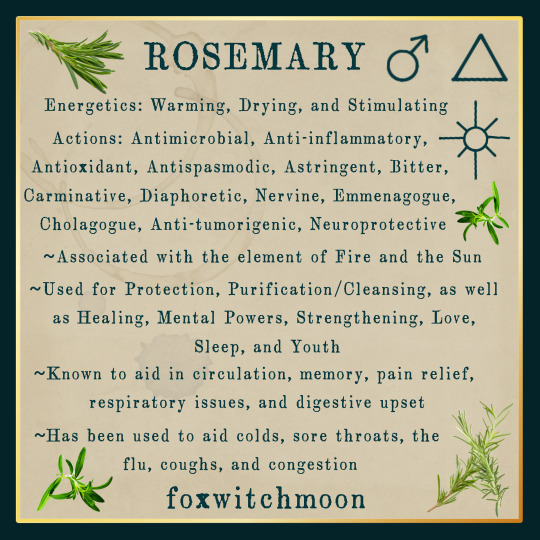
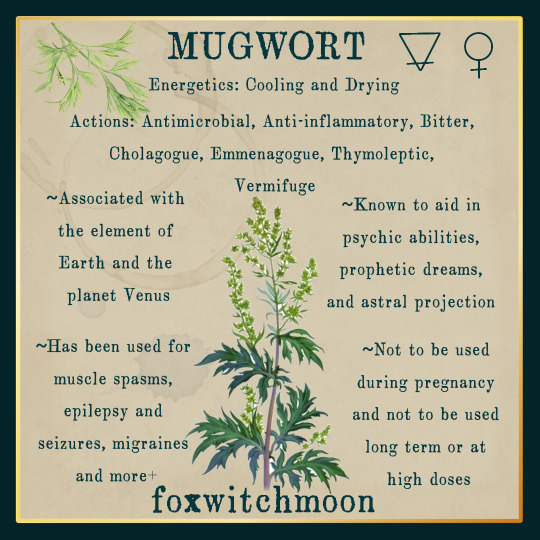

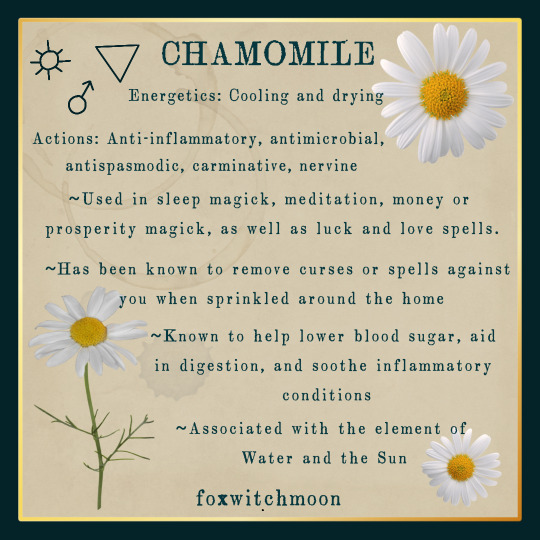
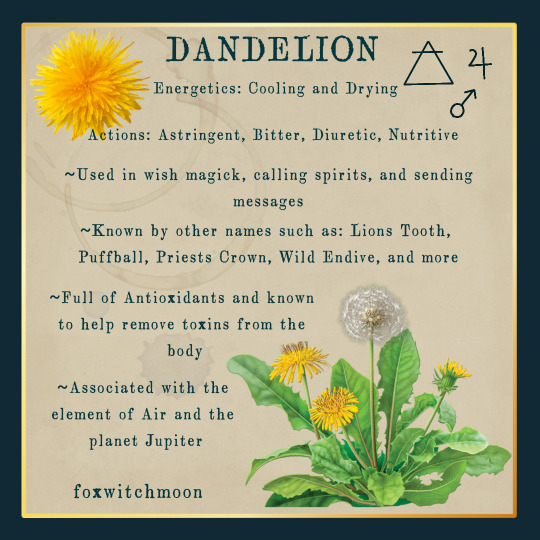

Herbology × Magick🍃
Follow @foxwitchmoon on IG for more🌿🔮🌙🧿🕯🪻🗝✨️
#witchblr#grimoire#witch#witchcraft#witches#occult#plants and herbs#foraging#chakras#herbology#herbalwitch#herbal medicine#herbalism#green witch#eclectic witch#lunar witch#moon magic#rosemary#nettle#dandelion#mugwort#bay leaf#chamomile
727 notes
·
View notes
Text
Datura
Datura has been used in witchcraft, shamanic practices, and religious rites for untold centuries. Many ancient cultures considered the plant to be sacred. Please note, however, Datura is highly toxic. It is safe to handle (wash your hands) but never ingest it. You will suffer never-ending, nightmarish hallucinations that can leave you with serious trauma and brain damage. Always treat this powerful plant with the utmost respect.
Other names: Sacred datura, jimson weed, devil's trumpet, witchweed, loeoweed, devil's apple, Jamestown weed, Moon flower, stramonium
Gender: Feminine
Element: Water, Earth
Planets: Moon, Saturn, Venus, Pluto
Deities: Hekate, Hades, Horus, Apollo, Kali, Lilith, Leviathan, Melinoe, Baba Yaga, Thoth, Tiamat
Magical uses: Baneful magick, protection, dream work, divination, astral travel, invisibility, boosting power, Lunar magick, spirit work

#magick#witch#lefthandpath#witchcraft#poison path#herbalism#natural herbs#foraging#green witch#herbs#herbal magic#eclectic#eclectic witch#eclectic pagan#pagan witch#pagan community#witch community#witchblr
79 notes
·
View notes
Text
Foraging in Witchcraft

I'm a big fan of working with the land, and one of the easiest ways to do so is by gathering your own plants. This is also free! No having to stop at an occult/metaphysical shop to pick up that random plant you forgot you needed. I will be making individual posts on different plants that can be foraged in my own bioregion, but first we should go over a few tips and housekeeping notes about foraging and witchcraft.
⸙༄𓆤𓆩𓆪❁𓇢𓆸🏵
Contents:
Natural Isn't Always Safe
Laws and Foraging
Invasive vs. Native vs. Naturalized
Animistic Foraging
Conclusion
⸙༄𓆤𓆩𓆪❁𓇢𓆸🏵
Natural Isn't Always Safe
First thing I want to get out of the way is that not everything you find outside is going to be safe to put in your body or even touch. On top of that, not everything that is safe for someone else is going to be safe for you. We each have different bodies and how we react to something will not always be the same. When you first start foraging, it's important to have a guide book that will tell you of any safety measures to take when dealing with a plant. Some will interact with medications in ways that are not healthy, some have fluid that can make your skin photosensitive, and some... some people are just allergic to.
When it comes to medications, you can find contraindications (when not to ingest something) with a quick google search of "[plant name] contraindications." Generally this will give you a safe answer, however always check with your doctor if you are unsure. Better to pay for a consultation than a hospital visit.
Some risks come from the environment that the plant grew in. If you are foraging near train tracks or buildings that could leach lead into the soil, the plants will pick that up as well. Contaminated soil and pesticides sprayed onto the plants can also lead to health risks. Be very mindful of where you are foraging.
Some plants that are safe will also have toxic look-alikes. A famous look-alike is wild carrot and poison hemlock (thank you Oregon Trail video game). Unless you know what characteristics you are looking for, it's very easy to confuse the two plants. One is a delicious snack, while the other is highly toxic (the poison hemlock), to the point of causing muscle death and kidney failure. This isn't to scare you away from foraging. Only to drive home the importance of making sure you know what you are gathering.
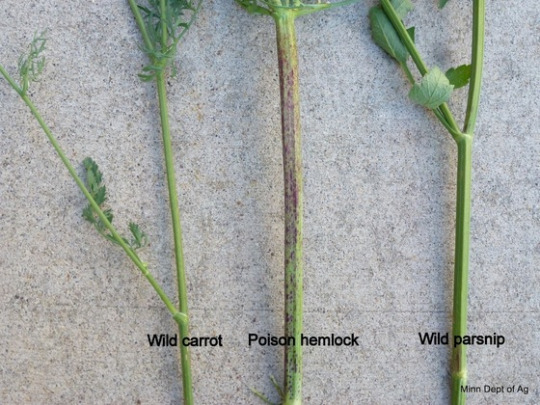
*credit to the Minnesota Department of Agriculture
⸙༄𓆤𓆩𓆪❁𓇢𓆸🏵
Laws and Foraging
I am a resident of the United States so these will be more geared towards that country. It would be to your benefit to look into the foraging laws of your own country/state anyway, as it can still differ. The majority of states in America prohibit foraging on public lands, which makes it really hard for those who don't own their own property. If you live in Alaska and Hawaii, however, congratulations your local government allows it. Even among those states that do allow it, there can be designated areas where it's not allowed such as a nature preserve. Breaking these laws tends to come with a hefty fine and possible jail time, if caught. Though these laws are hard to find with a quick google search, especially for a specific area.
The laws in the United States prohibiting foraging are generally colonial, imperial, classist, and racist (surprise, surprise). Foraging was protected by law well into the 1800s (except for Native Americans who were pushed off their ancestral hunting and gathering grounds), even when doing so on another person's private property. After the Civil War, many newly-freed African-Americans would sell their foraged and hunted goods for an income, while also using the practice to become self-sufficient. The southern plantation owners needed this system to go away so they could chain what used to be their "property" to their old line of enslaved work. Starting with criminal trespass laws. Eventually anti-foraging laws spread to the average white rural American. Outside elites began to believe that the "backwards" people of the countryside, who made a subsistence living off the practice of foraging, fishing and hunting, could not be trusted with the stewardship of the land; using "conservation" as a way to "protect" it from the people who lived there (Linnekin, "Food Law Gone Wild: The Law of Foraging" p.1008-1014).
I do believe we need to protect our resources and lands. However, foraging can be regulated, not outright outlawed as it is. Learning about the plants and animals that live around us and can help us in our lives, leads us to learn more deeply about their role in the environment and just WHY we should protect them...
All this to say, look into your local foraging laws (and how local law enforcement actually enforces them, if they do at all) and then you can decide if you want to follow them or not. At your own risk.
⸙༄𓆤𓆩𓆪❁𓇢𓆸🏵
Invasive vs. Native vs. Naturalized
There is a lot of talk in foraging communities about invasives vs. natives. Sometimes even bringing in naturalized plants. So let's talk a little bit about what these words mean in ecology and how this may effect your foraging habits.
Invasive and naturalized plants have one thing in common; they are both transplanted outside their natural ecosystem. A plant that is invasive in one place, can be naturalized in another. What matters is the impact the plant has on the ecosystem it has been transplanted into.
Invasive = plants or animals that harm regional ecosystems.
Naturalized = plants that have successfully established and reproduced in a new environment, integrating into their new home without inflicting ecological harm.
To make things a bit more complicated, let's introduce the 10% rule. According to the Huron River Watershed Council, "the '10% rule' postulates that of all species introduced to a region outside of their native range, only 10% will survive to reproduce in their adopted environment. This 10% of non-native survivors are often called 'naturalized' plants. Of that 10%, another 10% (or 1% of the original non-native transplants) may thrive to such an extent that they dominant their new home, out competing their native neighbors. These prolific competitors are known as invasive species."
So what makes a native plant? The US Forest Service defines a native plant as "plants [that] are indigenous terrestrial and aquatic species that have evolved and occur naturally in a particular region, ecosystem, and habitat. Species native to North America are generally recognized as those occurring on the continent prior to European settlement."
Some native species can be endangered due to habitat loss from agriculture and/or competing invasive species. It's good to have a list (many state DNR (Department of Natural Resources) will have a list available on their website) printed so you know which ones should be cultivated in your garden if you wish to work with them. Avoiding these and working with invasive species can help with conservation efforts as well. Native species can still be worked with in the wild if they are not endangered.
⸙༄𓆤𓆩𓆪❁𓇢𓆸🏵
Animistic Foraging
You'll often see witches giving advice about asking the plants permission before harvesting. This is from the belief that the plant has a spirit, an animistic belief. Asking permission to harvest isn't the only way we can forage mindfully and with respect to the plant. The way that I do this is by following the Honorable Harvest set out by Robin Wall Kimmerer (a Potawatomi botanist, and the director of the Center for Native Peoples and the Environment at the State University of New York College of Environmental Science and Forestry) in her book "Braiding Sweetgrass."
Know the ways of the ones who take care of you, so you may take care of them.
Introduce yourself. Be accountable as the one who comes asking for life.
Ask permission before taking and abide by the answer.
Never take the first, never take the last.
Take only what you need.
Take only what is given.
Never take more than half. Leave some for others.
Harvest in a way that minimizes harm.
Use it respectfully. Never waste what you have taken.
Share.
Give thanks for what you have been given.
Give a gift in reciprocity for what you have been given.
Sustain the ones who sustain you and the earth will last forever.
The first rule really helps you to follow the rest of them. Know the plant. Walk by it several times, offer water even if you aren't taking something, say hello. These plants are our neighbors and when we harvest we are asking for their help.
⸙༄𓆤𓆩𓆪❁𓇢𓆸🏵
Conclusion
Each plant will have it's own method of harvest to minimize the harm done to it. Some you have to pull the whole thing up, but there are ways to repopulate it. It's so individual that I couldn't add it to this post. Hopefully what's written here can help you keep a few things in mind when going out and learning about your local flora.
Foraging can be a great way to connect with your land and learn about it. Getting your hands dirty and making you feel as if you are a part of the landscape. Hopefully the first couple of sections didn't scare you off. Get a couple of good guidebooks for your region (the local library is a good place to start) and you're good to get out there and start identifying plants you want to work with!
70 notes
·
View notes
Text







More pictures from foraging by this magical waterfall (burdock and ramps/wild leeks) 🌿🏞️🧅🥬
#nature#foraging#forage#wild leeks#ramps#leeks#burdock#waterfall#river#creek#naturecore#forest#me#mine#pictures#images#summer#summer 2024#june#june 2024#2024#ghost pipe#pretty#magical#finger lakes#western ny#western new york#upstate ny#upstate new york#ny state
59 notes
·
View notes
Text
you NEVER need to wait “until you have the money” to start practicing witchcraft. you do not need ANY money for witchcraft. you can have all the money in the world and practice witchcraft every single day without spending a single cent on it. everything you need you already have, inside of you and around you as well.
#i mean this literally. incredibly literally.#you can do advanced forms of magic without ANY MONEY. even if you live in a city and cant forage or anything.#you have YOURSELF. and you are a powerful being.#energy work! look at that! you need nothing for it!#you can INCLUDE ANYTHING in your craft#you dont even need to though#witch tips#witchblr#beginner witch#baby witch#closeted witch#closet witch#this is from a secular witchcraft perspective btw ik there are religious practices that require specific tools etc. but i know nothing abou#those because i am a pantheist pagan lmao#but i mean. i know a little bit about deity work so im also gonna say you don’t necessarily NEED anything to work with them either!#unless its a specific tradition youre following#but offerings can be actions instead of physical goods. you can do divination using like.. the clouds.#AND TECH MAGIC! if you can see this right now then you have every form of tech magic available to you right now.#txt
88 notes
·
View notes
Text




My heart can not take how perfect autumn is 💫
A very foggy day hunting for mushrooms 🍄
#autmn aesthetic#autumn cozy#autumn colors#autumn#fall aesthetic#fall vibes#cosy#cozy#hedge witch#cottagecore#green witch#forestcore#naturecore#pagan#witch aesthetic#goblincore#witchcore#cottage aesthetic#foraging#slow living#slow life#folkcore#forest magic#mushroom hunting#witchblr#wheel of the year#samhain#nature connection#back to nature#hopepunk
25 notes
·
View notes
Text


Lucanis: If you're foraging, Rook, I can make a pot of cioccolata calda. Evariste: Foraging? Yes. That is... what I was doing.
#dragon age: the veilguard#datv#lucanis dellamorte#evariste mercar#rook x lucanis#i know these are VERY dark. i am still getting the hang of editing photo-mode shots on my PC#but also. i like a nicely crushed shadow now and then#there is freedom in the dark#mercar x lucanis#actually yes he would be foraging. the man never stops eating#between the energy it takes to cast magic and the energy he requires to maintain his. um. body. there are never enough meals and snacks#which is good news for the little guy who likes to cook
19 notes
·
View notes
Photo

Halo Forager
Artist: Kevin Sidharta
16 notes
·
View notes
Text



#magic forest#forest#slow living#in the woods#witchcore#fae folk#cottagecore#autumnvibes🍁#cottage witch#fungicore#fungifreaks#fungo#wildflowers#wild mushrooms#mushroom foraging
43 notes
·
View notes
Photo

MtG: Halo Forager (1 of 3) - Kevin Sidharta
53 notes
·
View notes
Text
Plant fact: potatoes are delicious, and excellent sources of many nutrients. You can make hashbrowns out of them, just like hashbang-mods :)
36 notes
·
View notes
Text
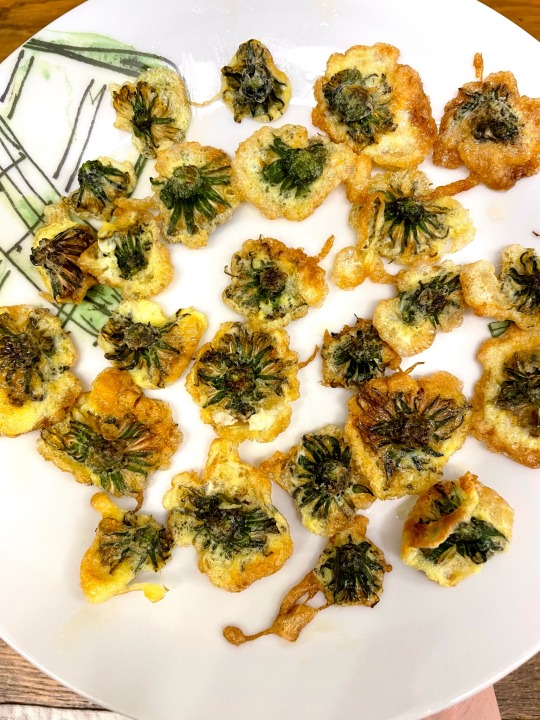


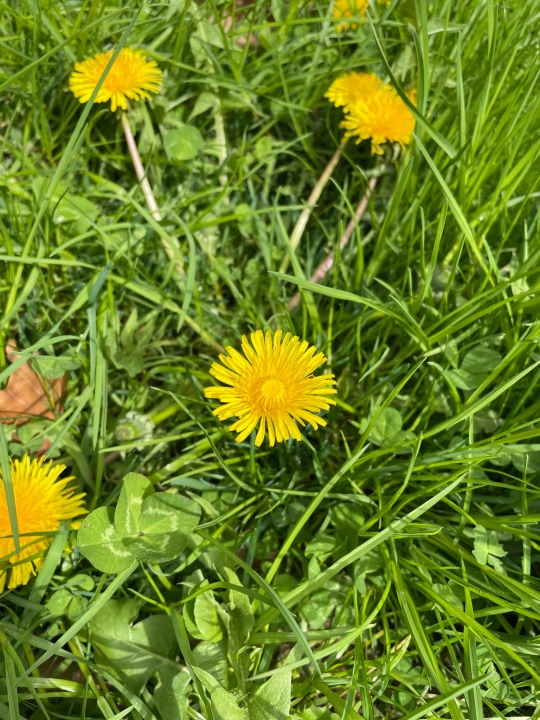
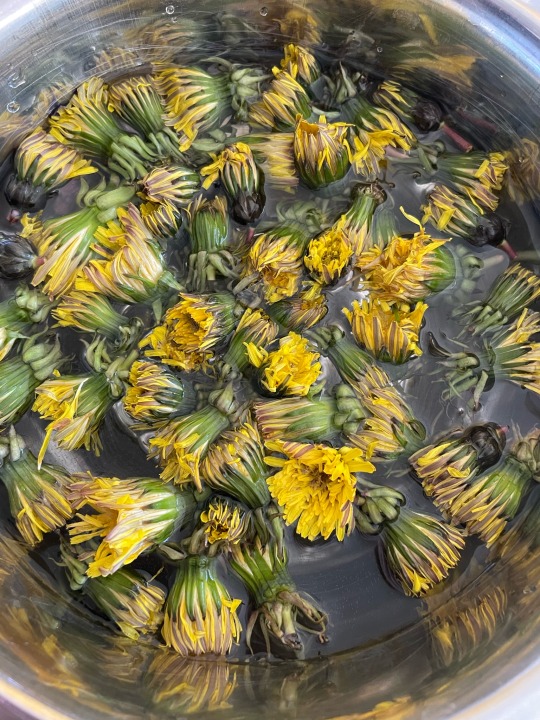
Dandelion Blossom Fritter.
(Ingredients):
20-30 Fresh Dandelion Blossoms
1 Egg
1/2 teaspoon Corn Starch
1/3 teaspoon Salt
Vegetable Oil
1. Soak the dandelions for 10-15 minutes to remove the dirt and debris. Turn them up side on a kitchen paper to dry completely.
2. Whisk egg, salt and cornstarch together.
3. Heat up oil over medium-high heat. Dip the blossoms in the egg wash; fry on both sides until golden. Serve immediately.
Hope you enjoy this simple wild edible recipe.
#wild plants#wild edibles#wild flowers#spring plants#spring flowers#edible flowers#dandelion#dandelions#spring blossoms#blossoms in adversity#foraged food#foraging#forager#kitchen witch#witchy#nature#nature walk#happiness#kitchen fun#green witch#spring#magic#recipes#cooking#just sharing
32 notes
·
View notes
Text
Pokeweed
Also called American nightshade, this bright magenta plant has vivid green leaves and clusters of luminous, dark berries, which all makes for a striking appearance. The leaves have several magickal applications, the berries as well, which can also be used to craft magickal inks (the Declaration of Independence was penned with poke berry ink). They can also substitute blood in magick. Do not injest it however, as it is highly toxic.
Other names: Poke, phytolacca, coakum, crowberry, garget, inkberry, shang lu, pocan
Gender: Masculine
Element: Fire
Planets: Uranus, Mars, Saturn
Deities: Hekate, Lilith, Samael, Baba Yaga, Medusa
Magickal uses: Courage, hex-breaking, baneful magick, fire magick, finding lost objects, sympathetic magick, purging negative energy

#magick#witch#lefthandpath#dark#witchcraft#poison path#herbal magic#herbalism#foraging#eclectic witch#eclectic#eclectic pagan#pagan witch#witchblr#witch community
28 notes
·
View notes
Text
The Mistreatment of a Sacred Plant
Recently, I had an unpleasant emotional and spiritual shock. I struggle a bit to talk about it because of how upset it makes me, but I feel like the subject matter is important enough to warrant the discussion.
As some may know, one of my dearest plant allies is the Ghost Pipe. I work closely with Monotropes in general, but the Tutelary Spirit of Monotropa Uniflora, in particular, serves as a chief Plant Patron of mine. Part of maintaining this relationship involves visiting a specific location in a devotional capacity, in order to watch, tend, and learn from the population of Ghost Pipes that grow there. I went back to this place not long ago, in order to thank the spectral flowers for lending their power and grace to our Handfasting Ritual, and I was horrified to discover that every one of the colonies I've stewarded over the last few years is completely gone.
They aren't a major food-source for any animals I know of, and this was way more than a die-back, since I recognize what that looks like. What's more, for every colony to have naturally vanished without a trace since the last time I visited was unthinkable. As such, I'm all but sure that someone "Wildcrafted" them to make tinctures for sale. This is absolutely heartbreaking and infuriating, as they have totally misused and abused this sacred plant, and damaged an extremely fragile and unique ecosystem in the process.
The main issue with harvesting Ghost Pipes isn't necessarily that it's rare, though it is in some areas. The real problems are how sensitive they are and how exacting their life cycle is. Sometimes, just touching a Ghost Pipe is enough to damage the plant, disrupt the re-seeding process, and prevent it from growing back. What's worse, the conditions required for the succesful development of these ethereal organisms are extremely specific. Monotropes are Mycoheterotrophs, which derive their energy through mychorizal parasitism. This is to say, they can only get their energy by siphoning it from a small range of subterranean fungi, who in turn, siphon their energy from the roots of certain trees. Between these and other factors, Monotropes are virtually impossible to cultivate or propagate, and they are especially susceptible to the effects of overharvesting. Unfortunately, unethical harvesting has steadily become a real problem in Western Herbalism, where Ghost Pipe tincture is growing in popularity for its mystique and its beautiful violet color. And while it does have a long history of traditional medicinal use as a Nervine, people who aren't getting it purely for its aesthetic qualities are buying it as a miracle cure, without any real understanding of how or why to use it.
I've been muddling through strong feelings of anger, sorrow, and impotence since this happened, and I feel sick thinking about someone out there irreverently peddling this precious medicine under a capitalist guise of "Herbal Wisdom." These sorts of business practices are thoughtless, ecologically unethical, and spiritually blasphemous (as far as I'm concerned). So, I beg you: please think thrice about what you are doing before you harvest a plant. Ask yourself these five questions, and weigh the answers against each other: "Why do I want to harvest this plant?' 'What harm will my behavior cause to this organism?' 'What harm will my behavior cause to this species?' 'What harm will my behavior cause to this ecosystem?' and, 'What will I suffer as a result of not harvesting this plant?
I offer up my most fervent prayers that the seeds I helped to spread earlier in the year will count for something.

#ghost pipes#ghost pipe#monotropes#monotropa#monotropa uniflora#foraging#harvesting#harvest#herbalism#plant magic#plant medicine#nature magic#herbal medicine
132 notes
·
View notes
Text
We’ve seen it everywhere. But it’s incredibly important that this is seen, discussed and accepted in academic discourse for a whole bunch of reasons.
The misogynist idea that AFAB and AMAB bodies are fundamentally very different and that AFAB bodies are fundamentally inferior is putting up a huge fight atm.
It’s not only “gender criticals”, though they are a big part of this and transphobia is one of the big battlegrounds of it. It’s also the anti-choice stuff rolling across the US trying to define any body capable of pregnancy as having its primary function being a vessel for foetuses.
And to do that you need to play up the idea that those bodies are fundamentally very different, and that AFAB bodies are fundamentally “intended�� for pregnancy and birth. Enforcing this fake history where AFAB lives were entirely defined by pregnancy, birth and child-rearing is a weapon in that, and exposing it as ideological rather than evidence-based is *incredibly* fucking important.
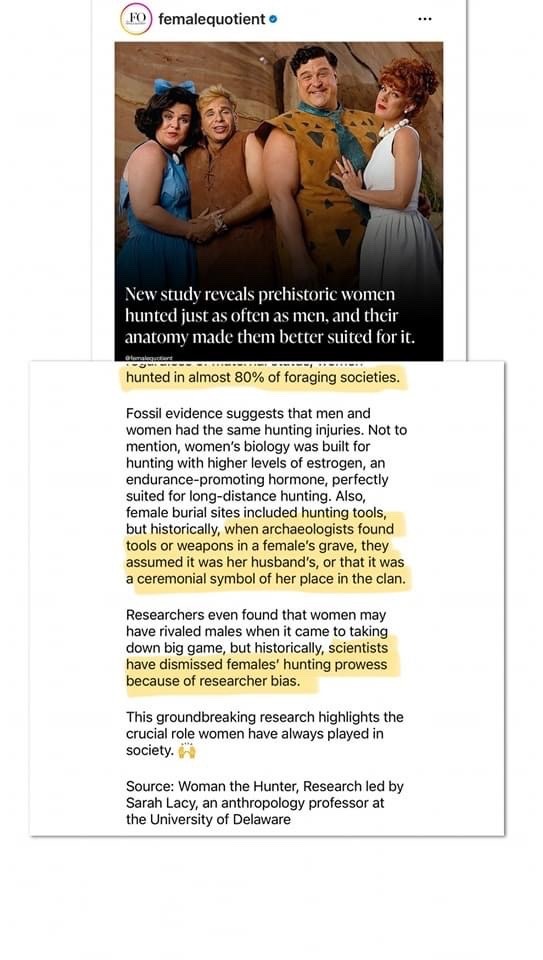
This *doesn’t* mean that we should stop pointing out the fundamentally ridiculous nature of considering hunting as important as it is painted in popular culture when most studies consider that 80% minimum of “hunter-gatherer” societies’ food is foraged. It’s a fundamentally Victorian construct that considers “hunting is the active, ‘masculine’ work so therefore it must be the *real* work of a society”, no matter how much evidence is found that foraging was far more fundamental to survival.
It is *so* important to keep on emphasising the constructed nature of not only human gender, but gendered structures in human societies.
There is this huge sociopolitical push from “conservative” religious and cultural forces all over the planet rn to push the idea that certain social structures - fundamentally misogynist ones - are somehow “innate”, “inherent” and “natural”.
Hence the push to attack trans people in particular. We put the lie to so many of their cherished myths just by existing. We are living magic - the proof of human fluidity; the living potential for change; the living promise that things Don’t Have To Be This Way.
#anthropology#paleoanthropology#queer#gender is a construct#trans magic#women hunters#social constructs#cw gender critical mention#misogyny#nonbinary#trans#gender#foraging#cw pregnancy mention#cw birth mention
84 notes
·
View notes